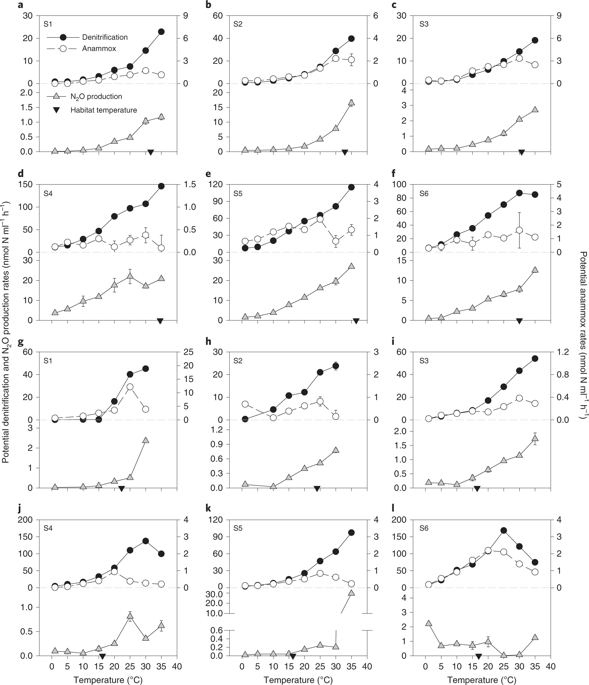Nature Climate Change ( IF 30.7 ) Pub Date : 2020-03-23 , DOI: 10.1038/s41558-020-0723-2 Ehui Tan , Wenbin Zou , Zhenzhen Zheng , Xiuli Yan , Moge Du , Ting-Chang Hsu , Li Tian , Jack J. Middelburg , Thomas W. Trull , Shuh-ji Kao

|
Temperature is one of the fundamental environmental variables governing microbially mediated denitrification and anaerobic ammonium oxidation (anammox) in sediments. The GHG nitrous oxide (N2O) is produced during denitrification, but not by anammox, and knowledge of how these pathways respond to global warming remains limited. Here, we show that warming directly stimulates denitrification-derived N2O production and that the warming response for N2O production is slightly higher than the response for denitrification in subtropical sediments. Moreover, denitrification had a higher optimal temperature than anammox. Integrating our data into a global compilation indicates that denitrifiers are more thermotolerant, whereas anammox bacteria are relatively psychrotolerant. Crucially, recent summer temperatures in low-latitude sediments have exceeded the optimal temperature of anammox, implying that further warming may suppress anammox and direct more of the nitrogen flow towards denitrification and associated N2O production, leading to a positive climate feedback at low latitudes.
中文翻译:

变暖以牺牲厌氧铵氧化为代价促进沉积物的反硝化
温度是控制沉积物中微生物介导的反硝化作用和厌氧铵氧化(厌氧氨)的基本环境变量之一。温室气体一氧化二氮(N 2 O)是在反硝化过程中产生的,但不是由厌氧氨氧化产生的,有关这些途径如何响应全球变暖的知识仍然有限。在这里,我们表明变暖直接刺激了反硝化衍生的N 2 O的产生,并且变暖对N 2的响应O的产生量略高于亚热带沉积物中反硝化的响应。此外,反硝化的最佳温度高于厌氧氨氧化。将我们的数据整合到一个整体汇编中,表明反硝化剂更耐高温,而厌氧氨氧化菌则相对抗精神病。至关重要的是,近期低纬度沉积物的夏季温度已经超过了厌氧氨氧化的最佳温度,这意味着进一步的变暖可能会抑制厌氧氨氧化并将更多的氮气流引导至反硝化作用和相关的N 2 O产生,从而在低纬度地区产生积极的气候反馈。



























 京公网安备 11010802027423号
京公网安备 11010802027423号